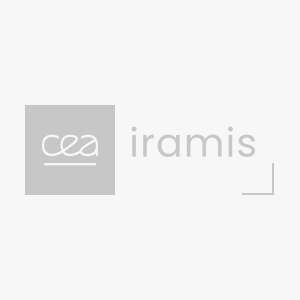Domaine, spécialité : Physique de la matière condensée
Mots-Clés : Dispositifs à haut rendement énergétique, semi-conducteurs, microscopie
Unité d’accueil : SPEC / LEPO
Résumé
Bien que les LED à nitrure soient extrêmement efficaces à faible teneur en indium (pour l’émission bleue) et à faible densité de courant, elles souffrent d’une chute drastique d’efficacité lorsqu’elles sortent de ces régimes, en partie à cause d’une augmentation des processus Auger-Meitner. Le but du stage proposé est de quantifier les processus Auger-Meitner dans les LEDs à nitrure in operando, en utilisant la microscopie d’électro-émission. En particulier, le rôle de la structure microscopique du dispositif sera étudié.
Sujet détaillé
The extremely high efficiency of nitride light emitting diodes (LEDs) has led to their worldwide use for energy efficient lighting. Current commercial white LEDs are indeed made of blue nitride LEDs, associated to phosphors that absorb in the blue region and reemit a wide spectrum in the visible. The active region of nitride blue LEDs consists in multiple InGaN quantum wells embedded in a GaN p-n junction.
However, these nitride LEDs suffer from drops in efficiency that prevent the extension of their use [1]. First, when increasing the injection current, the efficiency drops due to a strong contribution of 3-carrier Auger-Meitner processes, where the energy released by the electron-hole recombination is given to another charge carrier instead of producing a photon. Consequently, multiple small devices have to be combined to get high light intensities, increasing the cost and need for material. Second, the efficiency drops when increasing the indium content of the InGaN quantum wells, that would allow to make nitride LEDs emitting in the green or red region. It makes it impossible to have efficient 3-color nitride LEDs, which would surpass the current combination of a blue LED with a phosphor, both in terms of efficiency and color rendering. Again, in these long wavelength nitride LEDs, Auger-Meitner processes play an important role in decreasing their efficiency.
The aim of the proposed internship is to better understand and quantify Auger-Meitner processes in nitride LEDs at the microscopic scale. For this purpose, the intern will perform electro-emission microscopy on in operando nitride LEDs. This recently developed technique consists in imaging the electrons self-emitted by the LED in operation [2]. The analysis of the energy distribution of such emitted electrons allows identifying the ones originating from Auger-Meitner processes. Imaging their spatial distribution will allow to correlate their presence to the microscopic structure of the device. In particular, the role of V-pit structures formed around crystal dislocations in state-of-the-art green nitride LEDs will be investigated.
[1] C. Weisbuch, Review—On The Search for Efficient Solid State Light Emitters: Past, Present, Future, ECS J. Solid State Sci. Technol. 9 016022 (2020)
[2] T. Tak et al., Injection mechanisms in a III-nitride light-emitting diode as seen by self-emissive electron microscopy, Phys. Rev. Applied 20, 064045 (2023)
Lieu du stage
CEA-Saclay, (91) Essonne, France
Conditions de stage
- Durée du stage : 6 mois
- Niveau d’étude requis : Bac+5
- Formation : Master 2
- Poursuite possible en thèse : Oui
- Date limite de candidature : 1 octobre 2024
Compétences requises
Langue : Anglais
Méthodes, techniques :
Low energy electron microscopy, electron spectroscopy
Langages informatiques et logiciels :
Python for data treatment
Liens utiles
Site web du laboratoire : https://iramis.cea.fr/spec/lepo/
Page personnelle du responsable de stage




